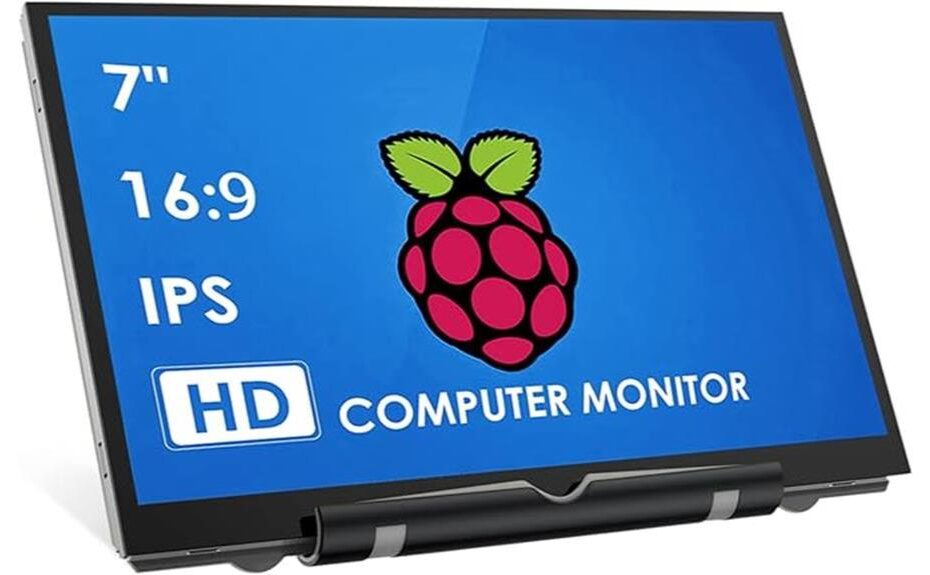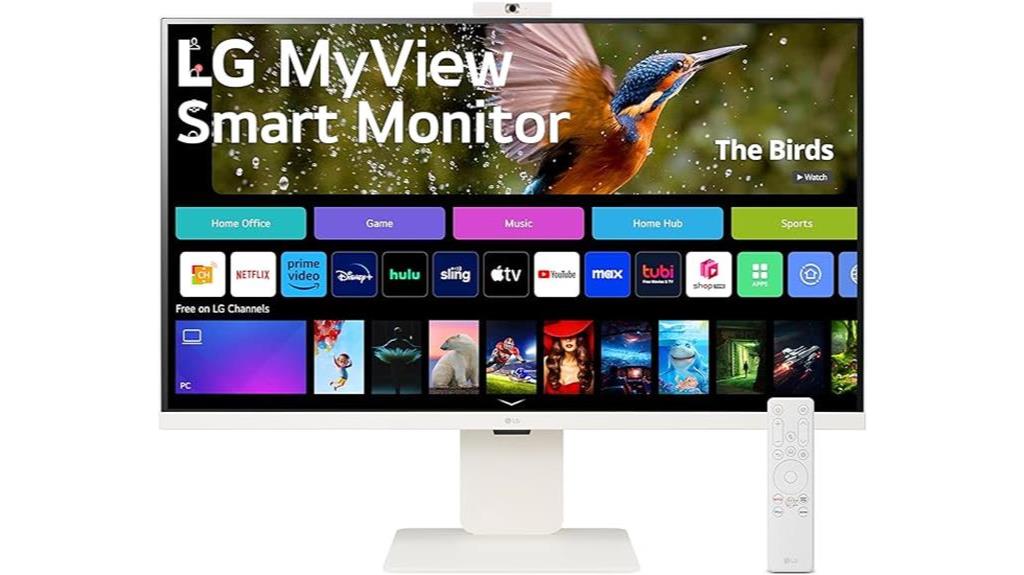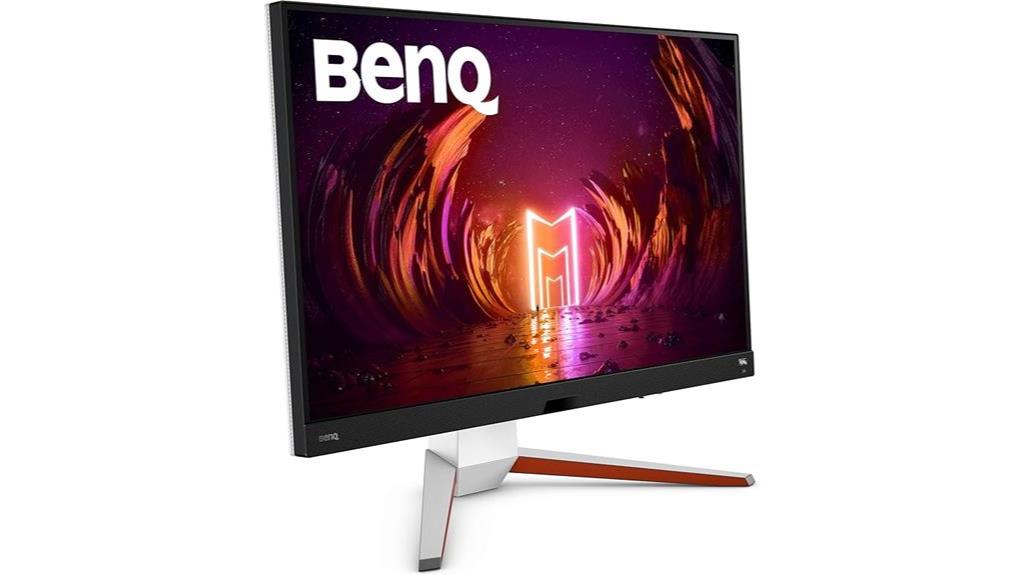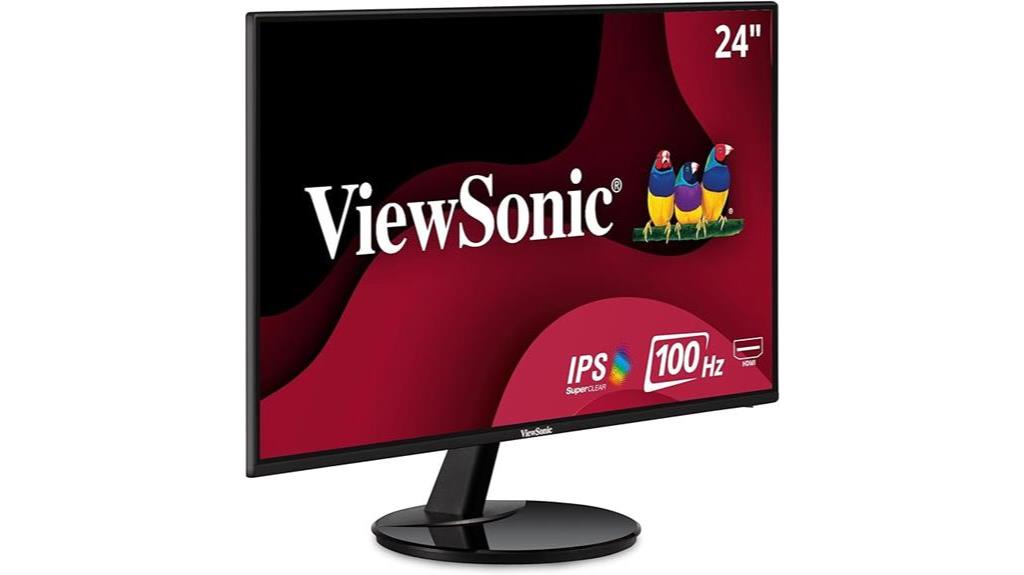



The Raspberry Pi Screen Monitor has garnered significant attention among tech enthusiasts and DIY enthusiasts alike, promising a compact and versatile display solution for a wide range of projects. On paper, its impressive features, including a high-resolution IPS screen and plug-and-play HDMI connectivity, suggest a reliable and cost-effective option for various display needs. However, with some users reporting image quality and compatibility issues, the question remains: does this monitor truly live up to its promise? Let's take a closer look at its features, benefits, and user experiences to determine its overall value and potential applications.
Key Takeaways
- This 7-inch IPS screen monitor is suitable for Raspberry Pi projects, offering a compact and portable display solution.
- With a plug-n-play HDMI connection, setup is hassle-free, and compatibility with various devices is ensured.
- The monitor features a durable design with tempered glass and full bonding process, ensuring longevity and protection.
- The 800×480 resolution provides clear and crisp visuals, with an immersive viewing experience and excellent color accuracy.
- Despite some users reporting image quality and setup issues, overall customer satisfaction is high, with a 4.0 out of 5-star rating.
When considering the 7-inch Raspberry Pi screen monitor from hengmiao, it boasts an IPS screen with 800×480 resolution and a 178° viewing angle, making it an attractive option for users seeking a compact and portable display solution. Regarding user experiences, many users praise the monitor's portability, ease of use, and value for the price. However, some users report issues with setup, resolution, and compatibility. Feedback on pricing indicates that users generally find the product to be affordably priced, with some requesting lower prices for price matching. Overall, users appreciate the monitor's functionality and performance, but have mixed reviews on image quality, stand design, and durability concerns.
Features and Benefits
This Raspberry Pi screen monitor boasts an impressive array of features that enhance its functionality and user experience. The IPS screen offers an expansive 178° viewing angle, ensuring crisp and clear visuals from any perspective. Additionally, the plug-n-play capability via HDMI and three application modes for laptops provide seamless connectivity and versatility.
IPS Screen With 178° View
Seven inches of vibrant display area are packed into the Raspberry Pi screen monitor, courtesy of its IPS screen with an impressive 178° viewing angle. This feature enables users to enjoy an immersive visual experience from any perspective, making it ideal for collaborative projects or presentations. The IPS screen also boasts excellent color accuracy, with a high level of screen brightness, ensuring that images appear vivid and lifelike. Additionally, the screen's durability is enhanced by the tempered glass and full bonding process, protecting it from scratches and damage. Overall, the IPS screen with 178° viewing angle is a key feature that elevates the Raspberry Pi screen monitor's performance and usability.
Plug-n-play via HDMI
With a simple HDMI connection, users can effortlessly set up and operate the Raspberry Pi screen monitor, eliminating the need for tedious driver installations and configurations. This plug-n-play convenience allows for a hassle-free experience, making it ideal for users of all skill levels. The monitor's HDMI compatibility ensures seamless connectivity with a wide range of devices, including laptops, PCs, and gaming consoles. The screen's 800×480 resolution provides a clear and crisp display, making it suitable for various applications. When setting up, users can follow simple setup tips, such as making sure the HDMI cable is securely connected and that the device is properly powered. With its plug-n-play design, this Raspberry Pi screen monitor is an excellent choice for those seeking a hassle-free and convenient display solution.
Three Application Modes
One notable feature of the Raspberry Pi screen monitor is its ability to operate in three distinct application modes, offering users flexibility and versatility in their display setup. The three modes include duplicate, extend, and second screen mode, catering to diverse user needs. This versatility is particularly useful for users who require multiple display setups or need to connect their Raspberry Pi to different devices. When it comes to installation, users can refer to the provided installation tips to guarantee a seamless setup process. Additionally, troubleshooting guides are available online to address any potential issues that may arise. When compared to competitors, the Raspberry Pi screen monitor's three application modes set it apart as a versatile and adaptable display solution.
Versatile Digital Connection Options
The Raspberry Pi screen monitor's versatility is further enhanced by its digital connection options, which facilitate seamless connectivity with a wide range of devices, including laptops, PCs, gaming consoles, and more. This versatility is made possible by the monitor's compatibility with various digital devices, ensuring that users can easily connect and access their preferred devices. The HDMI interface and USB power feature enable plug-n-play connectivity, eliminating the need for driver installation. This flexibility in connectivity options allows users to effortlessly switch between different devices, making the monitor an ideal choice for those who require adaptability and convenience.
Product Quality
Featuring a tempered glass and full bonding process, the 7-inch Raspberry Pi screen monitor boasts a robust build quality that withstands regular use. This attention to detail contributes to its product durability, ensuring a longer lifespan and minimizing the risk of damage. The monitor's IPS screen with 800×480 resolution and 178° viewing angle further enhances user satisfaction, providing an immersive viewing experience. With a compact design and lightweight construction, this monitor is perfect for on-the-go use. While some users have raised concerns about image quality and durability, the overall customer reviews suggest a high level of satisfaction, with 4.0 out of 5 stars from 532 ratings.
What It's Used For
This Raspberry Pi screen monitor is designed to be versatile and adaptable, making it an ideal accessory for a range of applications. It can be used to connect to gaming consoles, extend laptop screens, or power innovative Raspberry Pi projects. Whether for gaming, productivity, or creative pursuits, this monitor's flexibility makes it a valuable addition to any setup.
Gaming Console Connection
Connecting gaming consoles to the Raspberry Pi screen monitor allows users to enjoy an immersive gaming experience with vibrant visuals and responsive gameplay. This 7-inch IPS screen with 800×480 resolution and 178° viewing angle provides an excellent gaming experience. However, console compatibility may be an issue, and troubleshooting may be necessary to guarantee seamless connectivity. To optimize the gaming experience, users can adjust the screen resolution to match their console's output, guaranteeing a smooth and lag-free experience. Additionally, optimizing display settings can further enhance performance, making this monitor an excellent choice for gamers. With its plug-and-play HDMI interface and USB power, this monitor is an ideal accessory for gamers looking for a portable and versatile gaming setup.
Laptop Extension Mode
The Raspberry Pi screen monitor's laptop extension mode enables users to expand their laptop's display capabilities, providing a convenient and portable solution for multitasking, presentations, and data analysis. This mode allows users to extend their laptop's screen real estate, making it ideal for professionals and students who require multiple windows open simultaneously. However, compatibility issues may arise, and setup recommendations include ensuring the laptop and monitor are properly connected via HDMI and powered via USB. Users should also adjust the display settings to optimize performance. By following these guidelines, users can harness the full potential of the laptop extension mode, making it an essential feature for those seeking to boost their productivity.
Raspberry Pi Projects
Raspberry Pi enthusiasts and hobbyists frequently utilize the 7-inch screen monitor to bring their innovative projects to life, ranging from home automation systems to retro game consoles. This compact display is ideal for showcasing raspberry pi programming skills, allowing users to develop and showcase their projects with ease. Innovative DIY projects, such as smart home systems, media centers, and retro gaming consoles, can be brought to life with this versatile monitor. The plug-and-play functionality and compatibility with various devices make it an excellent choice for raspberry pi enthusiasts. Whether you're a seasoned programmer or a hobbyist, this monitor provides an excellent platform to showcase your creative projects.
Product Specifications
This 7-inch Raspberry Pi screen monitor boasts a compact design with dimensions of 0.39 x 6.5 x 4.09 inches and weighs 1.06 pounds, making it an ideal portable display solution. The IPS screen features a 800×480 resolution and 178° viewing angle, ensuring crisp and clear visuals.
| Specification | Description |
|---|---|
| Screen Size | 7 inches |
| Resolution | 800×480 pixels |
| Viewing Angle | 178° |
| Dimensions | 0.39 x 6.5 x 4.09 inches |
| Weight | 1.06 pounds |
The monitor is compatible with various devices, including Raspberry Pi, laptops, and gaming consoles, making it a versatile option for users. With a plug-n-play design and no driver installation required, setup is a breeze.
Who Needs This
Those seeking a compact, portable, and versatile display solution for their Raspberry Pi or other devices will appreciate the benefits of this 7-inch screen monitor. This product is particularly suited for a target audience of tech-savvy individuals, DIY enthusiasts, and professionals who require a reliable and portable display solution. Its practical applications include using it as a secondary monitor for laptops, a display for Raspberry Pi projects, or as a portable monitor for gaming consoles. Additionally, its compact size and lightweight design make it an ideal choice for those who need a display solution for trade shows, presentations, or other on-the-go applications.
Pros
Compact and lightweight, this 7-inch screen monitor offers a range of benefits that make it an attractive solution for users seeking a portable and versatile display option.
Some of the key advantages of this monitor include:
- High screen resolution: With a resolution of 1920 x 1080 pixels, this monitor provides crisp and clear visuals, making it ideal for a variety of applications.
- Durability: The tempered glass and full bonding process guarantee that the screen is sturdy and resistant to scratches and cracks.
- Portability: Weighing only 1.06 pounds, this monitor is easy to take on the go, making it perfect for users who need a display option that can keep up with their active lifestyle.
- Ease of use: With plug-and-play functionality via HDMI interface and USB power, setting up this monitor is a breeze, even for those who are not tech-savvy.
Cons
Despite its many advantages, this 7-inch screen monitor is not without its drawbacks, with some users experiencing issues related to image quality, setup, and compatibility.
Here are some of the notable cons:
- Image quality issues: Some users have reported problems with image quality, including flickering, vignette, and bright spots on the screen.
- Durability concerns: There are concerns about the monitor's durability, with some users recommending the use of a protective case to prevent damage.
- Setup and compatibility issues: Some users have experienced difficulties with setting up the monitor, particularly with resolution and compatibility issues.
- Limited viewing angle: The monitor's 178° viewing angle may not be sufficient for some users, particularly those who need to view the screen from different angles.
These cons highlight some of the potential drawbacks to take into account when evaluating this Raspberry Pi screen monitor.
What Customers Are Saying
Customer reviews and ratings provide valuable insights into the performance and usability of the Raspberry Pi screen monitor, with the majority of users expressing satisfaction with its display quality, portability, and ease of use. The 4.0 out of 5-star rating from 532 ratings indicates a high level of customer satisfaction. Users praise the monitor's compact design, vibrant display, and plug-and-play functionality. However, some users have reported performance issues, such as setup difficulties and compatibility problems with certain applications. Despite these issues, the overall sentiment suggests that the Raspberry Pi screen monitor delivers on its promises, offering a reliable and user-friendly experience. By understanding customer feedback, potential buyers can make informed decisions about their purchase.
Overall Value
With a price point that undercuts many of its competitors, the Raspberry Pi screen monitor offers an attractive value proposition for users seeking a reliable and feature-rich display solution. When comparing prices, this monitor stands out as a cost-effective option, making it an appealing choice for those on a budget. User experiences suggest that the product's value lies in its affordability, ease of use, and overall performance. However, some users have raised concerns about durability, citing issues with image quality and stand design. Despite these concerns, customer satisfaction remains high, with many users praising the product's value for the price. Overall, the Raspberry Pi screen monitor offers a compelling value proposition, making it a worthy consideration for those in the market for a reliable and feature-rich display solution.
Tips and Tricks For Best Results
To maximize the performance of the Raspberry Pi screen monitor, it is essential to adjust the display settings to suit your specific needs, ensuring the best possible image quality and user experience. For troubleshooting tips, refer to the setup guide for custom resolutions and compatibility solutions. Adjusting the display settings can resolve issues with resolution and compatibility, ensuring seamless connectivity with various devices. Explore customization options to tailor the display to your preferences. Additionally, utilize troubleshooting tips to overcome common issues, such as flickering or vignette. By following these tips and tricks, you can unleash the full potential of your Raspberry Pi screen monitor and enjoy an enhanced user experience.
Conclusion
To sum up, the Raspberry Pi screen monitor's versatility, compact design, and affordable price make it an attractive option for users seeking a reliable and portable display solution. With a 4.0-star customer satisfaction rating from 532 reviews, it's clear that this monitor has met the needs of many users. In terms of pricing comparison, this monitor offers excellent value for its performance and features. While some users have reported issues with setup and image quality, the overall consensus is that it's a solid choice for those seeking a portable display solution. As we've seen, the monitor's IPS screen, 178° viewing angle, and plug-n-play design make it suitable for a variety of applications.
Frequently Asked Questions
Can I Use This Monitor With Devices Other Than Raspberry Pi?
This 7-inch portable display boasts multi-platform compatibility, seamlessly connecting to laptops, PCs, gaming consoles, and more via HDMI, making it an ideal portable display solution for various devices beyond Raspberry Pi.
Is the Tempered Glass Screen Scratch-Resistant and Durable?
"The tempered glass screen's scratch-resistance and durability are reinforced by rigorous drop testing, ensuring the 7-inch monitor's glass quality withstands everyday wear and tear, providing a reliable and robust display experience."
How Do I Troubleshoot Connectivity Issues With My Laptop?
To troubleshoot connectivity issues with your laptop, verify for Network Errors and make sure all cables are securely connected. Update drivers to the latest version to resolve compatibility issues, and restart your laptop to apply changes.
Can I Adjust the Monitor's Brightness and Contrast Settings Manually?
'Adjusting monitor brightness and contrast settings can be done manually to optimize daylight viewing. Reduce power consumption by adjusting settings to suit your environment, ensuring best image quality while minimizing energy expenditure.'
Is the Manufacturer's Warranty and Customer Support Reliable?
'Rain or shine,' manufacturers' warranties can be a mixed bag; when it comes to customer expectations, understanding warranty limitations is essential. In this case, hengmiao's warranty and customer support reliability remain unclear, leaving customers to weather the storm of uncertainty.
Disclosure: As an Amazon Associate, I earn from qualifying purchases.





